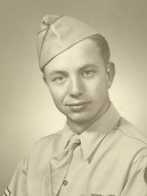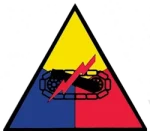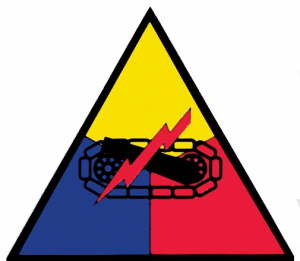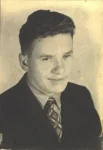S/Sgt. Elmer Curtis Hardy was born in Melrose Park, Illinois, on January 9, 1923, to Harry J. Hardy and Antonie Adamik-Hardy, and had two brothers. The family resided at 1542 North 36th Avenue in Melrose Park. He graduated from Grant Grade School and then Proviso Township High School in 1941. After high school, he worked, in Chicago, at the Evans Brothers Machine Shop.
Elmer registered with Selective Service on June 29, 1942, and named his father as his contact person. Knowing he would be drafted into the Army, Elmer enlisted in the United States Army Air Corps on September 8, 1942. He was issued the serial number 16 081 869. (The one at the beginning of his serial number indicated he enlisted.) He did his basic training at Shepherd Field, Texas, and graduated on December 1, 1942. He then trained at Keisler Field, Mississippi, as a mechanic, graduating on March 20, 1943, and was sent to Laredo Field, Texas, to gunnery school which he completed on June 18, 1943, as a nose gunner. He then was sent to the Pueblo Army Airfield, Colorado, for combat training as a member of the 578th Bomb Squadron, 392nd Bomb Group. All training was completed by July 18, 1943, and from the Alamogordo Army Air Field, New Mexico, the 392nd went to the New York Port of Embarkation and left the United States at the end of July 1943.
The 392nd arrived at the Royal Air Force Wendling, England, on August 1, 1943. It is known that he was a member of the crew of the B24 Liberator #185 piloted by 1st Lt. Russell Paules. After arriving, the bomb group trained for over a month before taking part in its first mission on September 9, 1943. It is known that he was wounded during a mission in June 1944 and was put in the pool to serve on as a replacement. On June 23, 1944, Elmer flew his final mission as a member of the crew of 1st Lt. Clarke G. McCarthy.
According to post-mission reports, the planes had completed their mission of bombing the Laon-Athies Airfield, France, and according to 2nd Lt. W. C. Smith, his plane was flying to the left of McCarthy’s bomber when McCarthy’s plane was hit by flak and went down in a turning dive since two engines were out. Before the plane hit the ground, it burst into flames. According to the official German report, at about 4:54 pm the plane crashed at Laon, France, and burned. A search was held for the crew members. What is known is that the two wing gunners, Sgt. Joseph Elsleger Jr. and S/Sgt. John A. Morris were captured. The other five members of the crew made contact with the French underground and returned to England. Another member of the crew, T/Sgt. Joseph S. Knight and Elmer were dead. Knight’s chute had not opened. Elmer was said to have been found dead about five miles southeast of Laon near Bruyeres, France.
One of the two crew members taken prisoner said about Elmer, “The last tine I saw him was in the a German Headquarters’ courtyard where I was taken riding in a German motorcycle and they showed me his (Sgt. Hardy’s) parachute that he was lying under. It looked to me as if he had bullet holes in the left side of his face, but they may have been flak holes. He was dead.”
German records show that Elmer was buried in the civilian cemetery in Liesse, France, in Grave 43 on June 26, 1944. On July 5, 1944, Elmer’s parents received a telegram from the War Department.
MRS NETTIE HARDY
1542 NORTH 36TH AVENUE
MELROSE ILLINOIS
THE SECRETARY OF WAR DESIRES ME TO EXPRESS HIS DEEP REGRET THAT YOUR SON STAFF SERGEANT ELMER C HARDY HAS BEEN REPORTED MISSING IN ACTION SINCE TWENTY THREE JUNE IN FRANCE PERIOD IF FURTHER DETAILS OR OTHER INFORMATION ARE RECEIVED YOU WILL BE PROMPTLY NOTIED PERIOD
ULIO
THE ADJUTANT GENERAL
A letter quickly followed the telegram.
Mrs. Nettie Hardy
1542 North 36th Avenue
Melrose Park, Illinois
Dear Mrs. Hardy
This letter is to confirm my recent telegram in which you were regretfully informed that your son, Staff Sergeant Elmer C. Hardy, 16, 081, 869, Air Corps, has been reported missing in action since 23 June 1944 over France.
I know that added distress is caused by failure to receive some information or details. Therefore, I wish to assure you that at any time additional information is received it will be transmitted to you without delay, and, if in the meantime no additional information is received, I will again communicate with you at the expiration of three months. Also, it is the policy of the Commanding General of the Army Air Forces upon receipt of the “Missing Air Crews Report” to convey to you any details that might be contained in that report.
The term “missing in action” is used only to indicate that the whereabouts or status of an individual is not immediately known. It is not intended to convey the impression that the case in closed. I wish to emphasize that every effort is exerted continuously to clear up the status of our personnel. Under war conditions this is a difficult task as you must readily realize. Experience has shown that many persons reported missing in action are subsequently reported prisoners of war, but as this information is furnished by countries with which we are at war, the War Department is helpless to expedite such reports. However, in order to relieve financial worry, Congress has enacted legislation which contains in force pay, allowances and allotments to dependents of the personnel being carried in a missing status.
Permit me to extend to you my heartfelt sympathy during this period of uncertainty.
Sincerely yours,
(signed)
J. A. ULIO
Major General
The Adjutant General.
The War Department on September 4, 1944, through the International Red Cross, learned that the German Government had reported S/Sgt. Elmer C. Hardy dead. A telegram was sent to his parents the same day.
NETTIE HARDY
1542 NORTH 36TH AVENUE
MELROSE PARK ILLINOIS
THE SECRETARY OF WAT DESIRES ME TO EXPRESS HIS DEEPEST REGRET THAT YOUR SON STAFF SERGEANT ELMER C HARDY WAS KILLED IN ACTION ON TWENTY THREE JUNE IN FRANCE LETTER FOLLOWS
ULIO THE ADJUTENT GENERAL
The telegram was followed by a letter confirming that he had been killed in action. His parents held a memorial service for Elmer September 8, 1944, at the First Evangelical Free Church in Melrose Park.
It appears that it took over a year after the end of the war for the American Graves Registration Service to recover Elmer’s remains. What is known is that his remains were exhumed and moved to the United States Military Cemetery, Champigneul, France. In a letter dated, June 2, 1947, his parents were sent a photograph of his grave in the cemetery. Another letter, dated July 31, 197, arrived and told his parents of their options for Elmer’s final burial. They were asked to fill-out and return an enclosed form indicating where they wanted Harold buried. The Office of the Quartermaster General received the form on October 15, 1947, which indicated that they wanted him returned to the United States for burial.
At first, his parents requested that Elmer be buried at Rock Island National Cemetery, Rock Island, Illinois, but at a later date, they changed their minds and decided to have Elmer buried in a local cemetery. Elmer’s remains were exhumed again and taken by train to the AGRS Port Unit in Antwerp, Belgium, arriving on September 8th. There, his remains were casketed and sailed on the USAT Carroll Victory on September 16th. The ship arrived in the New York Port of Entry on October 6, 1948, and remained there until October 12th when casket was sent by train, with a military escort, to the Quartermaster Corps’ Distribution Center #8, Chicago, arriving on the 14th.
On November 9, 1948, in a military hearse with a military escort, his casket was taken to the Bormann Funeral Home in Melrose Park. The next day, November 10, 1948, S/Sgt. Elmer C. Hardy was buried in the Woodlawn Cemetery, Forest Park, Illinois.






